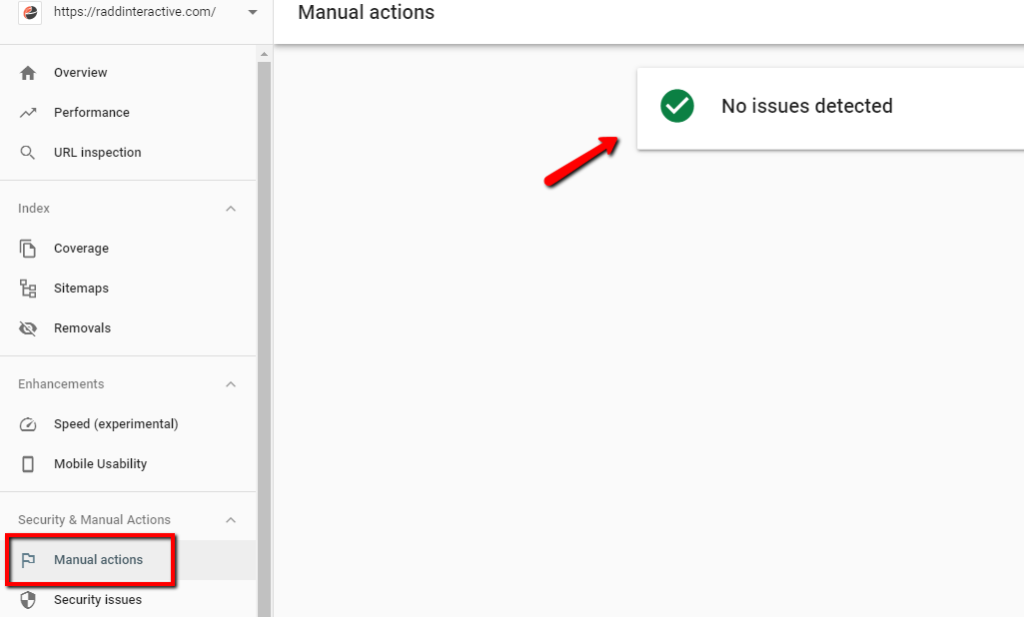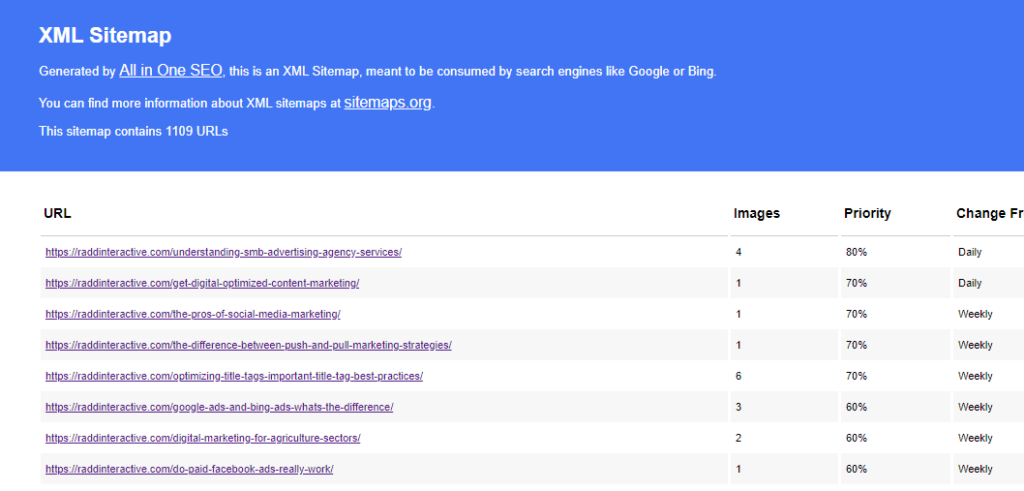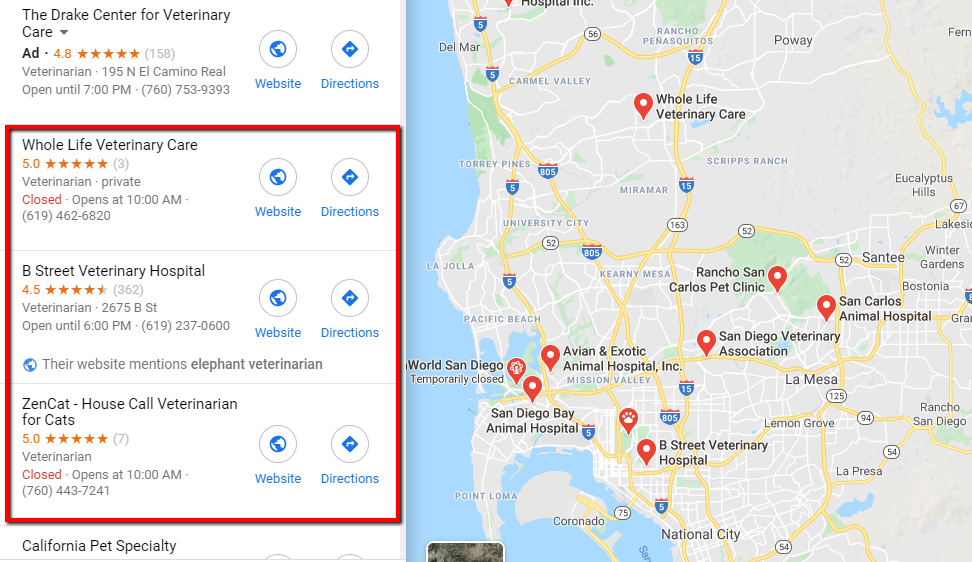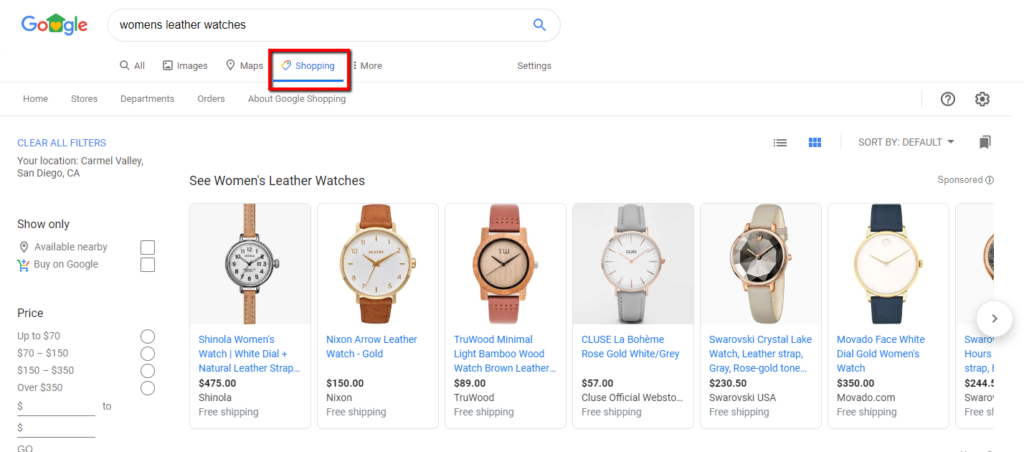How do I Get My Business Listed on Google Search?
Search engines are a big way that businesses can rely on getting visitors to their site. These days a legitimate online presence is a must-have for being able to sustain website traffic, which means that being visible in search engines is more important than ever.
For new and growing businesses, one question on their minds is “how do I get my business on Google search?”
Here’s how to make your business show up on Google search results and how to improve your search traffic. Fortunately there’s multiple ways to do it, and each way involves a few simple steps or barely any work at all. Getting your website listed on Google’s index means that you can rely on greater organic traffic flow to your site, and also begin with good search engine optimization strategies (SEO).
So why is search-engine traffic (often called “organic” traffic) so important?
Web search has become such a normal way for people to find information, visit businesses, and shop online, that it’s now impossible to ignore as one of the single most important business channels. According to research from BrightEdge, 40% of all online revenue comes from organic search, and search engine traffic makes up more than half of all web traffic. Google alone is still the most popular search engine, accounting for more than 90% of the search market, meaning that getting your business listed on Google search could be crucial for long-term growth.
How do I get my business listed on Google Search?
One way is to simply just do nothing! (But it’s not the best way).
Most websites will be crawled, indexed, and listed in Google search results naturally, without any effort, as long as they are set up properly.
Search engines like Google (as well as Bing) use indexing bots that crawl the web looking for new websites and new URLs to add to their index. If you want to get your business listed in Google search results it has to be “indexed” by Googlebot.
What is Googlebot exactly? It’s a bot designed by the search company to hop from page-to-page using links. Since Googlebot sees each URL as a page, it crawls each page that it finds, adds it to the Google index (or ignores it if the page is not worth indexing) and then it crawls the rest of the page looking for links to new pages.
If an outside domain links to one of your site’s pages, Googlebot can get to your site that way and begin indexing it.
You don’t really have to do anything at all to get your site on Google search. As long as your site is crawlable and set up properly, you’ll be indexed naturally.
In order to have Googlebot index your site and to make your business show up on Google search you need to be sure of a few things:
- Make sure your content is visible and can be crawled. Content that is intentionally hidden to humans but shown only to web bots is bad for SEO. Likewise, Googlebot can have trouble with some coding like Ajax or complex JavaScript.
- Use canonicalized pages to make sure that Googlebot indexes the right pages, and so that it understands your site.
- Use a robots.txt file or meta-robots tags to make sure that only pages you want indexed are indexed. Recently Google has suggested that blocking pages using a robots.txt file will no longer work for blocking some pages from the index. Instead, if you want to prevent pages from being indexed you should use meta “noindex” tags, or “nofollow” tags.
Check out Google’s own guidance on blocking pages from search, for more information.
What if My Site is Not Appearing in Search Results?
If your site has been live for a while and you find that you are not getting search traffic, you may need to run some diagnostics. If your site is very large, such as with an eCommerce site, or if you have lots of URLs, Google may have trouble being able to crawl and index your site entirely.
In this case you may run out of “crawl budget” where Google stops indexing URLs on your domain if it thinks that Googlebot is overloading your server and bogging down your site.
In cases like this it may be a good idea to create and submit a sitemap. You might need a sitemap if:
- Your site is very large and has many URLs.
- Your site has a large range of content pages that are isolated or not well linked to each other. This can make it difficult for Googlebot to hop from page to page using links.
- Your site has a lot of video/image media content or if you want to appear in Google News.
Another reason that your business might not get listed on Google search results is if you have had a “Manual Action” penalty and parts of your site, or your whole domain, have been removed from the index. Particularly if you find certain pages are no longer in the index.
Manual actions mean that a human reviewer at Google has found that some pages on your site are not compliant with its webmaster quality guidelines. Usually this is because of dishonest attempts to manipulate a site’s search rankings or because a site may be spammy or harmful to visitors.

In order to make sure that your business gets listed on Google search, you will want to set up a Search Console account and use the “Manual Actions” report to verify. This report will tell you why you have received the Manual Action and give you advice on how to resolve the issue, once it has been fixed you can request verification to have your pages restored to the index.
It can also help you go through a technical SEO audit checklist in order to determine if there are other issues preventing your business from being added to Google.
Submitting a Sitemap

As explained above, even if you do nothing, you can still rely on Google to index your site naturally. But there is away to make the process faster.
Google encourages websites to submit a “sitemap” that Googlebot can crawl regularly. This can not only get your site crawled much faster, but it will help get all your pages re-crawled regularly and help to make sure that only the most up-to-date pages are showing in search results.
So now your question is “how do I get my business on Google search faster?” First you need a Google Search Console account. This is a free tool from Google that gives websites the ability to monitor their domain in Google’s index, find data on how searchers are getting to their site, and learn about any issues or errors they have that could be hurting their performance.
Next, you can usually check your site’s sitemap buy adding “/sitemap.xml” to the end of your domain and visiting the file in your browser. If this doesn’t work you main need to check your content management system (CMS) settings to see if it is creating a sitemap for you, or have your web developer check.
(When setting up your Search Console account your site and URL pattern need to be listed in the “Sites to search section” in the Basics tab. This will also help with indexing).
In your Search Console, navigate to Sitemaps in the left side menu. Here you can add the URI for the location of your sitemap and… that’s it! Your sitemap is submitted, and this should be enough to get your business listed on Google search.

You should also make sure that your sitemap is up-to-date and is updated automatically (most content management systems can do this).
Plus, make sure that your sitemap only includes status code 200 URLs – there should be no redirects, 404s, or non-canonical URLs (separate URLs for the same pages). And of course you should only include URLs for pages that are important for your business and that you actually want to be listed in Google search results.
Google My Business
A Google My Business account is another way of increasing your brand or business’s visibility for map search and local search queries. This account is also free and lets you connect with web searchers on Google Search and Google Maps.

A Google My Business account is not required to get your website indexed and placed in Google search results. But you do need it if you want to be able to manage your brick-and-mortar business’s profile with information like address, operating hours, photos, contact info, etc.
This is important if you want to get your business on Google search for local results and local search queries. It can also help your business grow with greater foot traffic or gain online business for local search queries.
Here you can select the town or city where your business is physically located and begin setting up your listing. Think about what NAP (Name, Address, and Phone-number) that you want web searchers to be able to see and add them to your listing. Google My Business will guide you through the process of filling out the form.
Google Shopping
If you own an eCommerce business that relies on being able to sell physical products, then you may be wondering how to get your business on Google Shopping search.
Google Shopping is a separate tab on Google search that allows people to search for products and shop through product listings without leaving the Google search results page. This means that you have the option to export your products off-site, directly into Google where people can browse and buy without ever even visiting your site.

Better yet, Google has recently updated this eCommerce focused channel to include organic shopping results. You can get your business products listed on Google search results for Shopping customers, but you need a Google Merchant Center account for this. Without a Merchant Center account your business’s products will not appear in Google Shopping naturally like they do for standard search results. Stores have to set up a Merchant Center account, upload their product data specifications into Merchant Center, link a Google Ads account, and set up a campaign.
Once you have linked your accounts and verified them with Google, you are good to start selling your products. Because organically listed results on Google Shopping are free, you do not need to run a paid ad campaign, as long as your products have been uploaded properly, they can appear for free in Google search results.
This is how to get your business on Google search if you want to predominantly focus on eCommerce sales and to advertise your products. Plus, Google Shopping also gives you the option to run paid ads as well!
Paid Search Advertisements.
First, let’s make a distinction here. Search ads aren’t the same as getting your “business on Google search” in the general sense. They are paid ads, and not organic results. But they are nonetheless a way of getting your brand or business to appear in search.
With a Google Ads account you can bid on specific and custom search keywords and have your ads appear next to regular organic search results. These search ads work on the pay-per-click (PPC) model where advertisers pay the “bid” amount every time someone clicks on their ads. These ads also appear at the top of the search results page which means they can take advantage of a higher click-through-rate (CTR) and lead to more search traffic.
This style of ad also allows marketers to target their own custom audience by setting up ad campaigns under certain settings. PPC ads let you target by search keyword, age, gender, industry and more.
Because millions of web users use Google search every day, getting your business listed on Google search with PPC ads is a good way of growing your business quickly. With a Google ads account you also have the option of creating and running Shopping Ads (like we described above) along with “display” ads which are banner/graphic style ads that appear across the Google ad network on affiliate 3rd party ad sites as well as on Google’s YouTube.
Learn More
Wondering “how do I get my business on Google search?” Our team can help. Contact us to get information on building your business with full-service digital marketing services!
